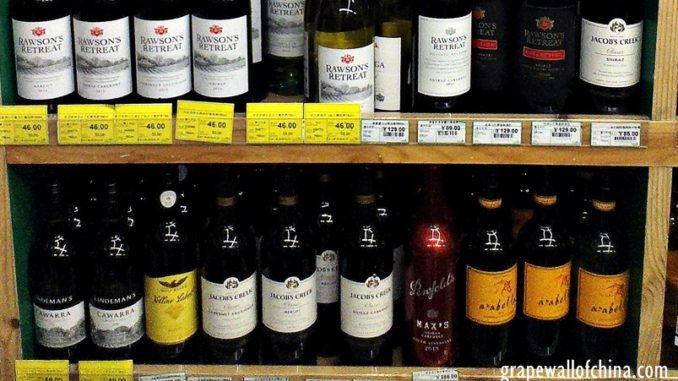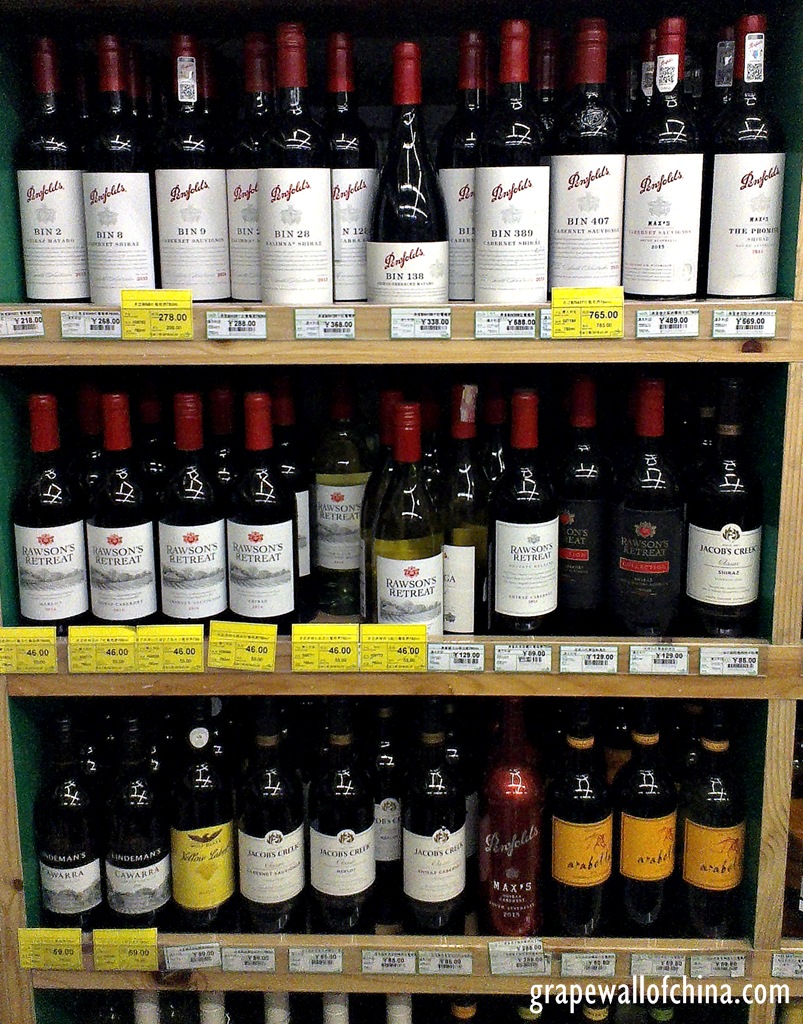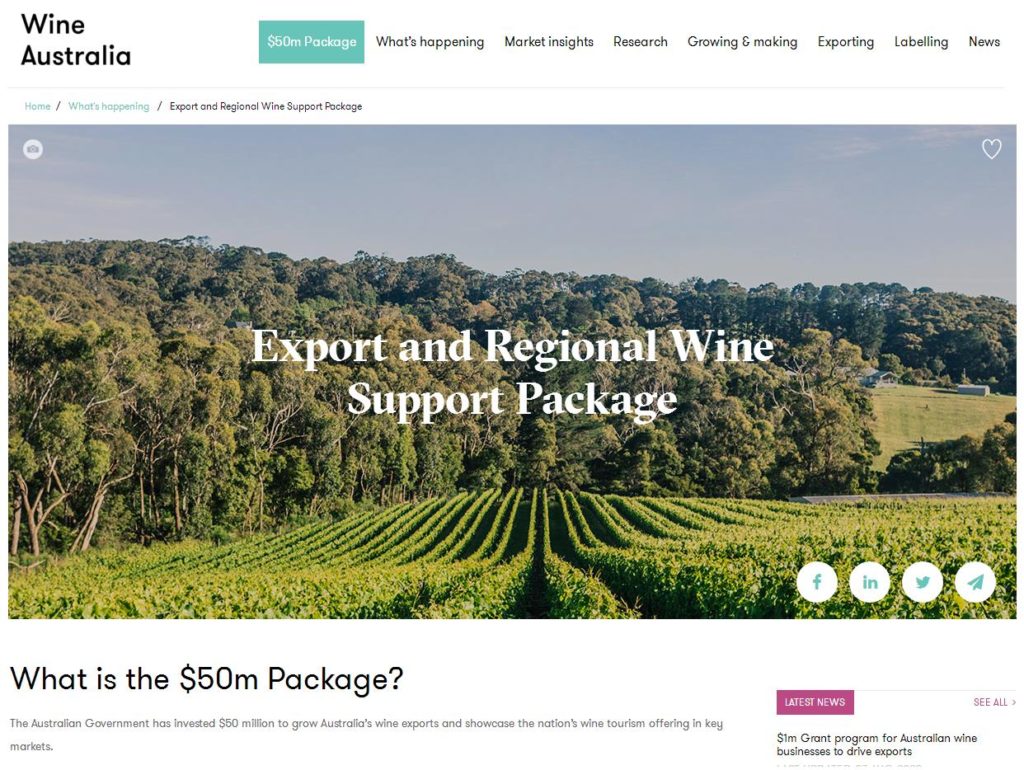
Got a bunch of emails, social media messages and phone calls about the anti-dumping probe China just launched into Australian wine imports. Here is some basic info, with commentary, based on the document that outlines the investigation–to supplement my recent lengthy newsletter.
Note: The following is based on my own translation, so anyone making business or other decisions about this case should do their own due diligence. Also, everyone requesting more info on top of the free stuff already provided — feel free to help Grape Wall at this link!

Who initiated the case?
China Alcoholic Drinks Association (CADA), cited as having 122 wine producers as members — “These members account for the vast majority of total output and are representative and influential in the industry.”
(CADA is highly active in promoting Chinese booze, including baijiu, the popular spirit that has some 40 times the revenue of Chinese grape wine–see World Baijiu Day. You will often see CADA reps at big alcohol events in this country.)
The document states CADA took action as, “A large amount of Australian wine has been exported to the Chinese market in recent years, which has caused serious impact and damage to the domestic wine industry.”
(I think there is no dispute that imported wine, including from Australia, took major share from domestic companies. The question is whether this is due to unfair practices, to factors like consumer preference, marketing strategies and China’s free trade deals with nations such as Australia and Chile that provided potential price advantages, or both.)

Who is the target?
Ten companies are listed. No shocker to see Treasury Wine Estates, with a huge slice of Australian imports, listed first. TWE is best-known for Penfolds, including entry-level label Rawson’s Retreat, plus brands like Wolf Blass.
Others listed include Casella, known for [yellow tail]; Accolade, with brands like Hardys, Banrock Station and Grant Burge; and Australian Vintage, with Barossa Valley Wine Company, McGuigan, Tempus Two and Nepenthe in its portfolio.
The rest of the list: Yalumba, South Australian Wine Group, The Wine Company, Truffle & Wine, Wangara Wine Group and Stoney Run.

The document states that the volume of Australian imports in question rose by 113% between 2015 and 2019 but the value decreased 13.3%.
What are the numbers?
It states domestic market share fell from 74.4% in 2015 to 49.5% in 2019, with sales revenue falling 68.9% and profits down 79.7%. It further lists production as dropping from 1.16 billion liters to just 451 million liters from 2015 to 2019.
(See my post on the accuracy and production numbers. I also covered it in the newsletter.)
Of the numbers in general, it says they show “production and operating conditions of domestic industries are deteriorating sharply.”
(Again, there is little doubt the local wine industry has struggled these past five years. And many people are frustrated as the quality of local wine has greatly improved and gained respect within the global trade. The issue is whether it is due to unfair practices by Australia wineries.)
(For example, many factors affect prices, from currency fluctuations to trade agreements. It’s interesting to note that the free trade deal between China and Australia, which reduced tariffs on incoming wine by 14%, neatly overlaps the period in question.)
The document also notes wine consumption is just 0.6 liters per person in China, with great potential for growth. And that, in an attempt to take and to expand share, “Australian wine manufacturers do not hesitate to take low-cost price-cutting means.”

What’s beyond the numbers?
The document lists some 40 programs seen to benefit Australian wine producers and potentially give them unfair advantages. This includes potential tax refunds to producers and a AU$50 million program from 2017 to 2020, headed by Wine Australia, that in part supported export efforts–literally known as Export and Regional Wine Support Package.
It also includes other programs and grants that cover everything from cellar doors to irrigation use to export promotion to drought recovery. Even “exceptional circumstances interest rate subsidies.”
What else?
It’s interesting how the document argues wines from China and Australia are “similar products.” Stylistic and other factors differ in wines but they share a similar base material in grapes–and specifically that many of the varieties used in Australia and China share a similar origin in Europe.
The similarity argument also extends to production processes, end uses (for drinking, naturally!) and sales channels.
That’s as far as I made it so far. I’ll update again when I get time to hop back into this issue and this document further.
This case is interesting because of the precedents it might set. The sorts of programs listed that support Australian wineries, including for export development or irrigation or [insert blank here], are also found in many other regions / countries, thus making them potential targets, too. And how might that impact China as it exports it increasingly exports its own wines, with aspirations to grab market share abroad?
Grape Wall has no sponsors of advertisers: if you find the content and projects like World Marselan Day worthwhile, please help cover the costs via PayPal, WeChat or Alipay.
Sign up for the free Grape Wall newsletter here. Follow Grape Wall on LinkedIn, Instagram, Facebook and Twitter. And contact Grape Wall via grapewallofchina (at) gmail.com.

Leave a Reply
You must be logged in to post a comment.